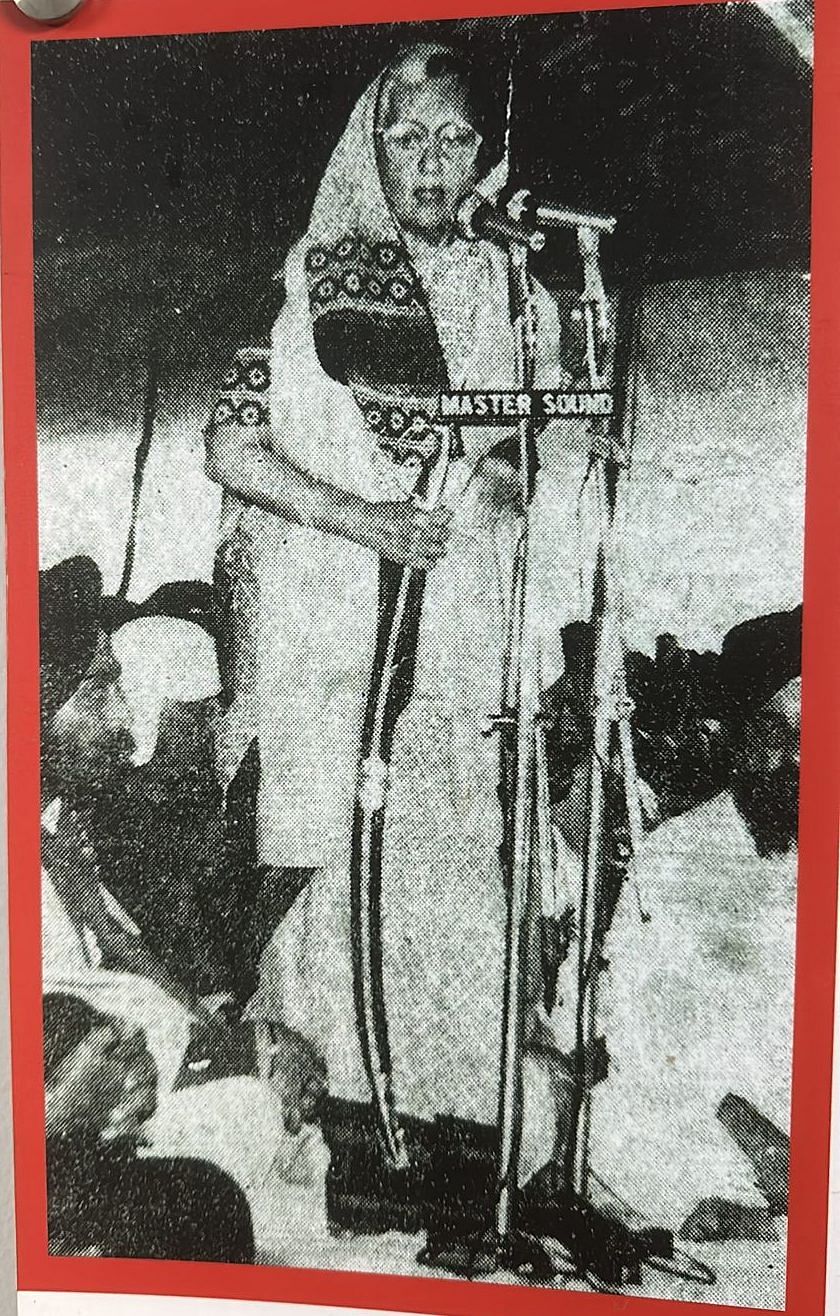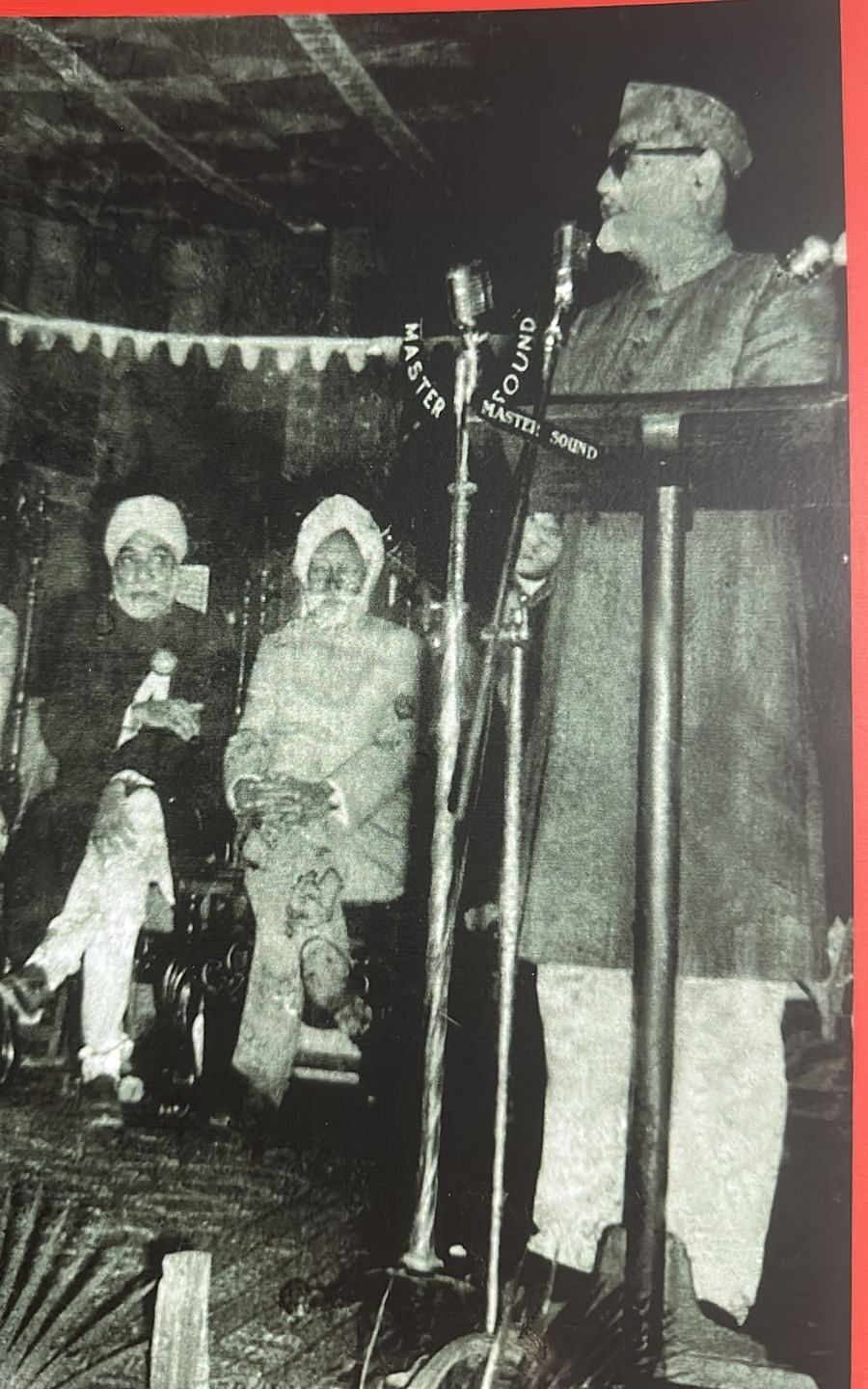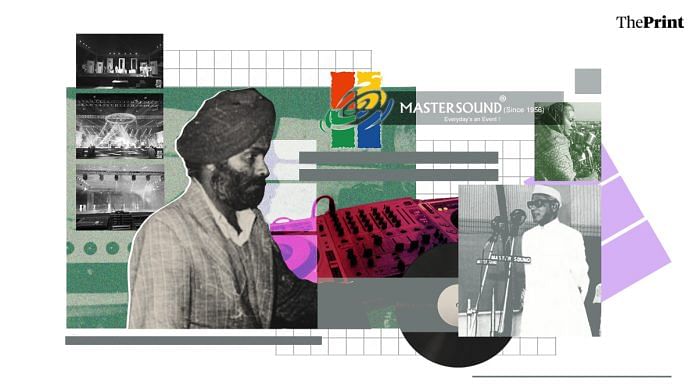Social media has transformed how politicians and celebrities take their message to the masses — with one click, a tweet reaches millions. But before the internet and television, it was companies like Master Sound that amplified their voices. Everyone, from Sardar Vallabhbhai Patel to Indira Gandhi turned to this company’s microphones and speakers for their public addresses. In many ways, their sound systems shaped the voice of Independent India.
The company’s founder Sardar Thakur Singh and his family came to Delhi as Partition refugees. He had to leave behind his textile business in Pakistan. But the entrepreneurial spirit was hard to shake. He turned to Dariyaganj, which was already a lively hub of eateries, havelis and small shops, to set up a business. But this area was too expensive, so Singh started looking for an alternative.
This led him to Panchkuian Road. Named after the five Mughal-era wells that provided water to people living in this area, this road was developed by British town planners as the second arterial route that connected Old Delhi to the evolving capital of New Delhi. Over time water wells got laid over by ever-expanding roads and the largely residential areas of Panchkuian Road became a commercial hub for new and emerging businesses.
“My grandfather Thakur Singh ji had agricultural land and he also traded in textiles. But after Partition, he lost all his land to Pakistan and had no capital to restart the textile business. But he did not lose his entrepreneurship gene and started working as a mechanic. From radio to cycle, he would repair anything and everything,” said Tarandeep Singh, the current owner of Master Sound.
With waves of migrants coming from Pakistan as well as from across India, the Delhi of the late 1940s was bustling with energy and opportunity. Thakur Singh set up a roadside mechanic shop. Repair work got him enough income to rent a shop in the first multistorey building that came up on Panchkuiyan Road. Side by side with his repair shop, he started working in the sound industry.
“In those days, there was a system of pagdi, where you gave a large upfront advance to the landlord and then the commercial shop could be yours to use for a very paltry monthly rent. With so many customers giving leads for his sound business, Thakur Singh ji realised that it would be very lucrative to start rental work of microphones, audio systems and public address systems,” said Tarandeep.
He added that at the time, there was a huge shortage of high-tech sound systems for indoor and outdoor performances, seminars, meetings, rallies etc by political and non-political entities.
Also Read: Nehru was a fan of Moti Mahal Restaurant. It brought Old Delhi and Lutyens’ together
No compromise on quality
In the 1950s there were hardly any local audio brands and most microphones, amplifiers, speakers and even clips, wires and mic stands were imported from abroad. They were then rented out to Delhi studios by large Bombay-based studio owners.
Thakur’s son, Gurnaam Singh entered the family business in the early 1950s and the business brand Master Sound was formally launched in 1954.
“It was a big thing to have Shure microphones and cabinet speaker systems. It was prohibitively expensive so no other Delhi studios would keep such high-end brands. Most studios had just a bhopu (megaphone). But because my father used the best equipment, his acoustics were considered unmatched,” said Tarandeep.

In its early phase, heavy equipment would be carted around in horse-driven tongas, then came three-wheeled open tempos. There were huge tube amplifiers which had to be warmed much before the performance because they gave their best output only when their inner filaments were warmed up. Good speakers were very large, almost as big as a sofa set. A lot of care had to be taken during transportation because new equipment took forever to be imported. The employees had to be trained and coached to take care of sensitive equipment.
Soon after Thakur Singh ventured into the business, leaders such as Sardar Vallabhbhai Patel, Morarji Desai, and Zakir Hussain called on his assistance for their public addresses. The company’s location in Delhi was an advantage. As it was the political epicentre of India, there were always events which needed foolproof public address systems.
Also Read: Baggi, bandhgalas, baajas—Sohan Lal & Sons Ghori Wala pioneered the baraati band in Delhi
Making history
Master Sound provided PA systems at the Republic Day Parade at India Gate and Independence Day celebrations at Red Fort for almost 30 years from 1955. It would step in not only for presidential and prime ministerial events but also for speeches, convocations, and seminars by various visiting heads of state. They also took care of the sound for high-profile non-political events like the performances of visiting ballet troupes from Russia, American magic and illusion shows, German circuses, and international concerts.
They were tasked with providing sound systems for significant national events like the inauguration of Bhakra Nangal Dam, the launch of IIT-Delhi and a new wing of Banaras Hindu University.
Alla Rakha would not perform unless the audio was handled by Gurnaam Singh. He handled the sound for landmark events like the Ravi Shankar and George Harrison concert in Delhi.
Master Sound was responsible for the audio during the performance of Lata Mangeshkar’s Aye Mere Watan Ke Logon in 1963, two months after the India-China war. “My father told me that when Lata Mangeshkar sang everyone in the audience and on the stage started crying. In fact, every time my father would recall that incident – his eyes would well up,” said Tarandeep.
Master Sound was on stand-by for all foreign crews too. During the shoot of Richard Attenborough’s film Gandhi, all the vintage equipment on screen was hired from Master Sound. In essence, Master Sound handled the reel as well as the real sound systems.
“My father would not compromise on sound, however high the expense was. But he hardly ever spent on himself. He was such a simple man that he would always have home food even if he was doing sound at Hyderabad house or at PMO. I once remember my mother sent me to deliver his lunch while he was doing acoustics and public address system for the Boat Club Kisan Rally by Indira Gandhi. The rally was so big that it extended from India Gate to Red Fort. I remember carrying my dad’s tiffin all the way through that crowd,” recalled Tarandeep.

Master Sound may not be a commercial brand that the general public knows much about, but archival footage of the late 1940s, 1950s and 1960s shows they have always been an excellence-driven brand entity whose presence is part of historical events of the city. It continues to occupy that niche space.
This article is part of a series called BusinessHistories exploring iconic businesses in India that have endured tough times and changing markets. Read all articles here.
(Edited by Theres Sudeep)



